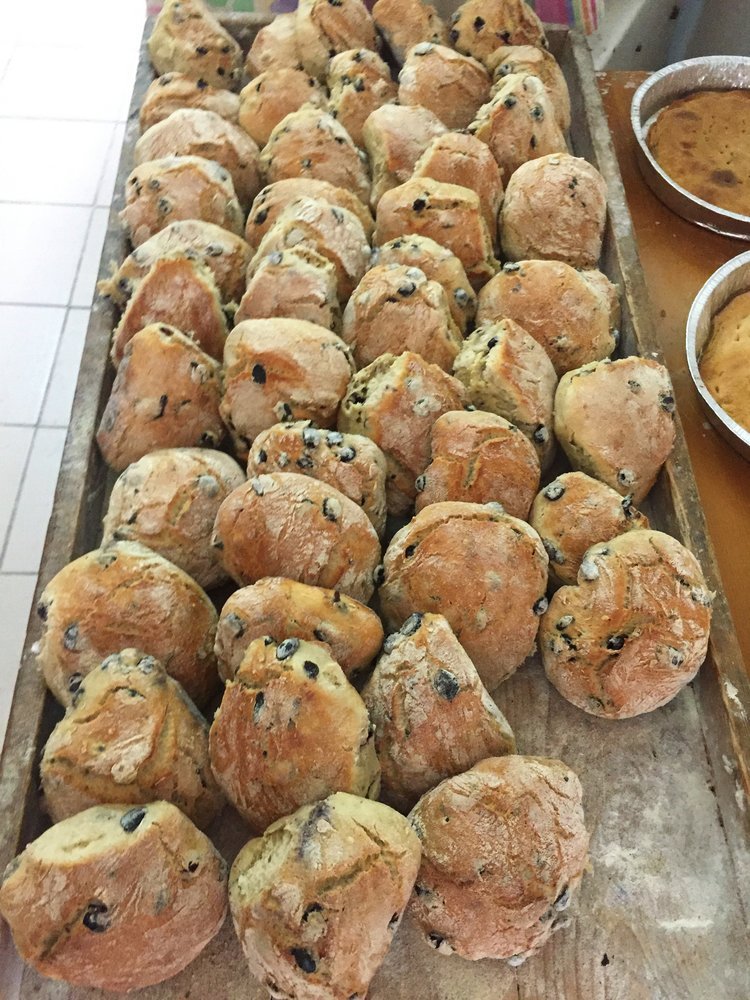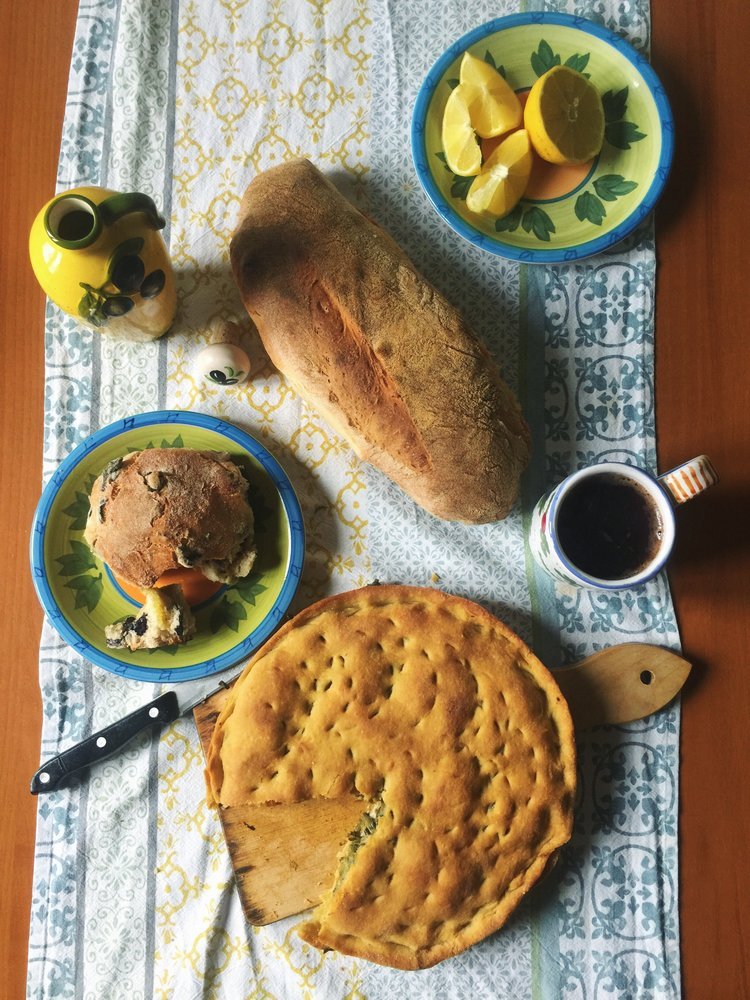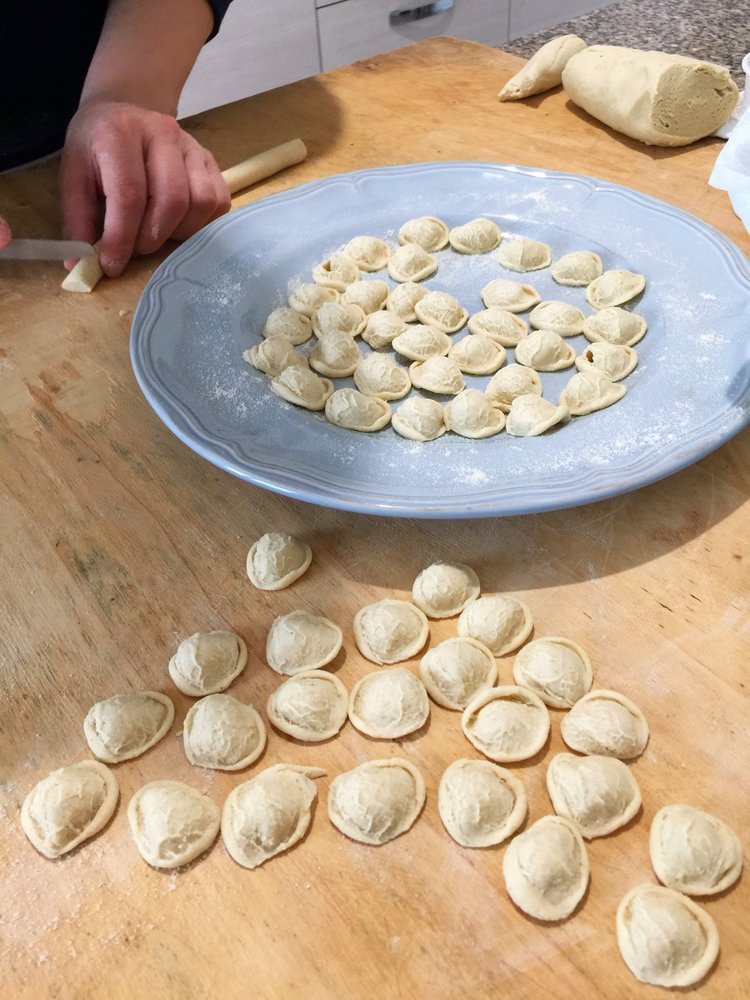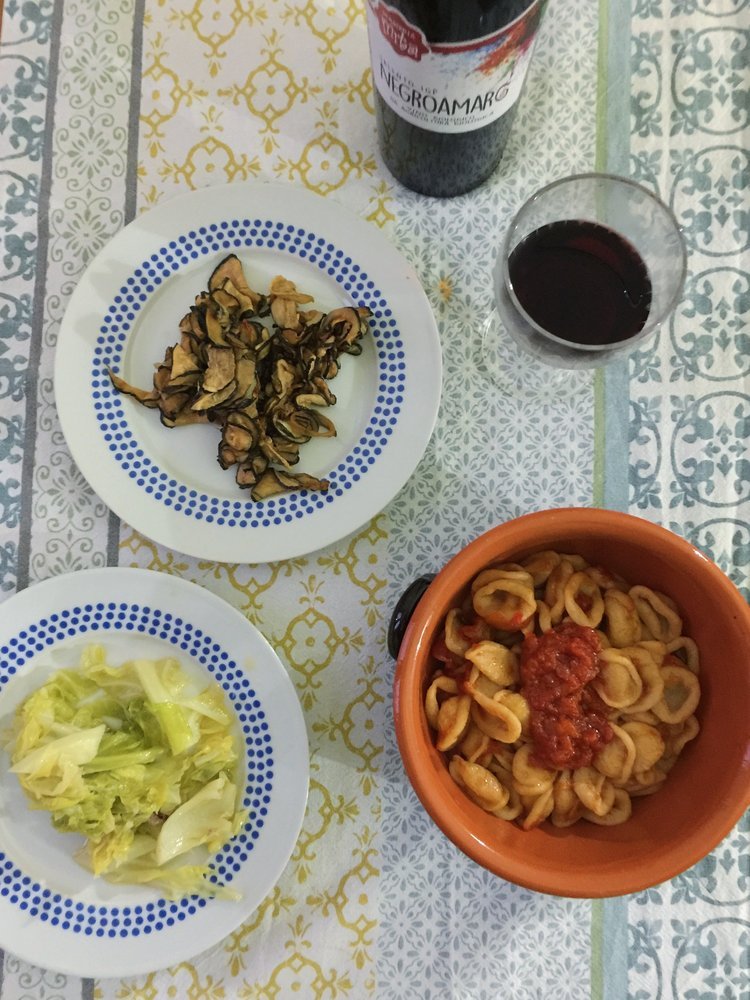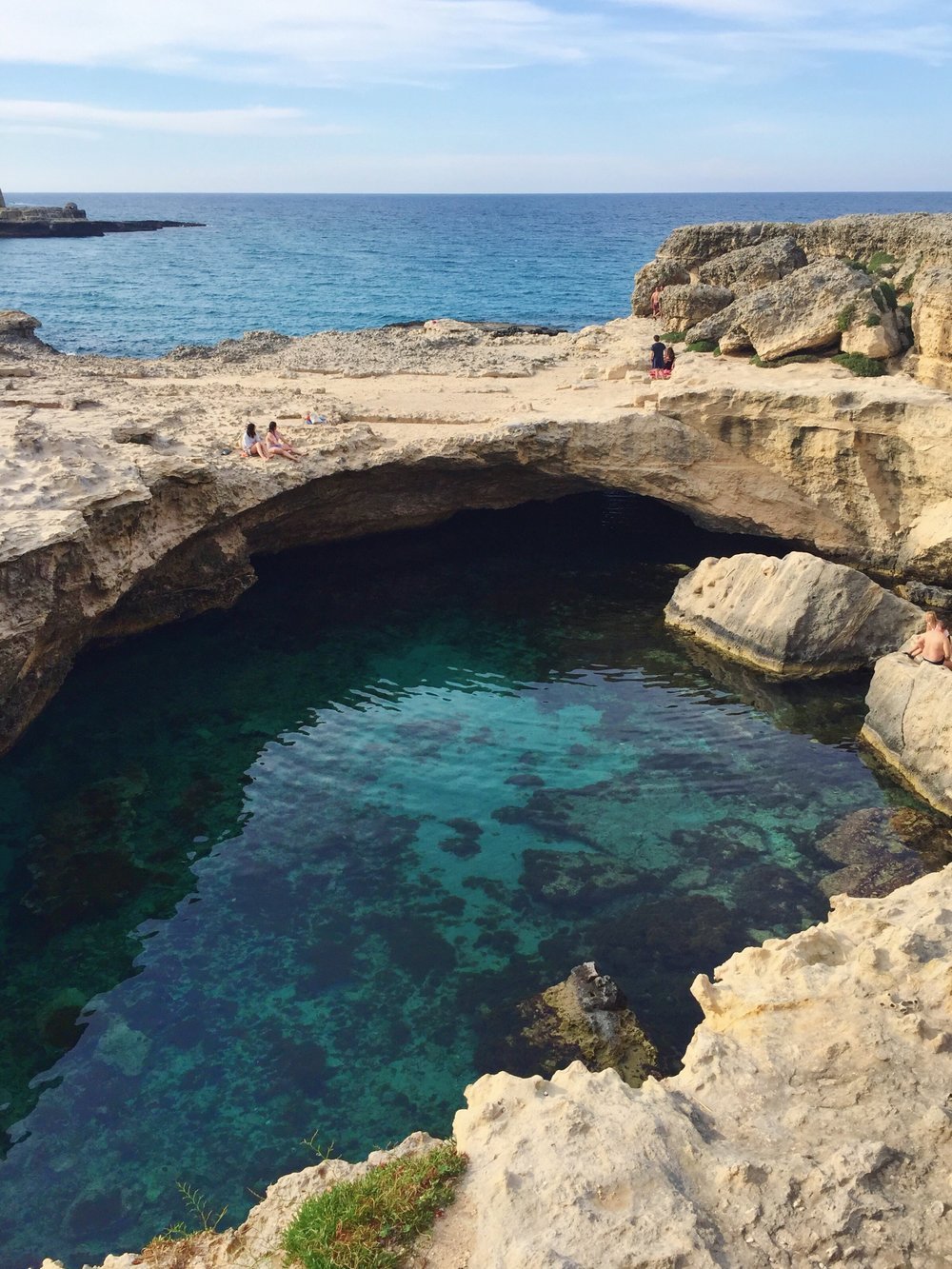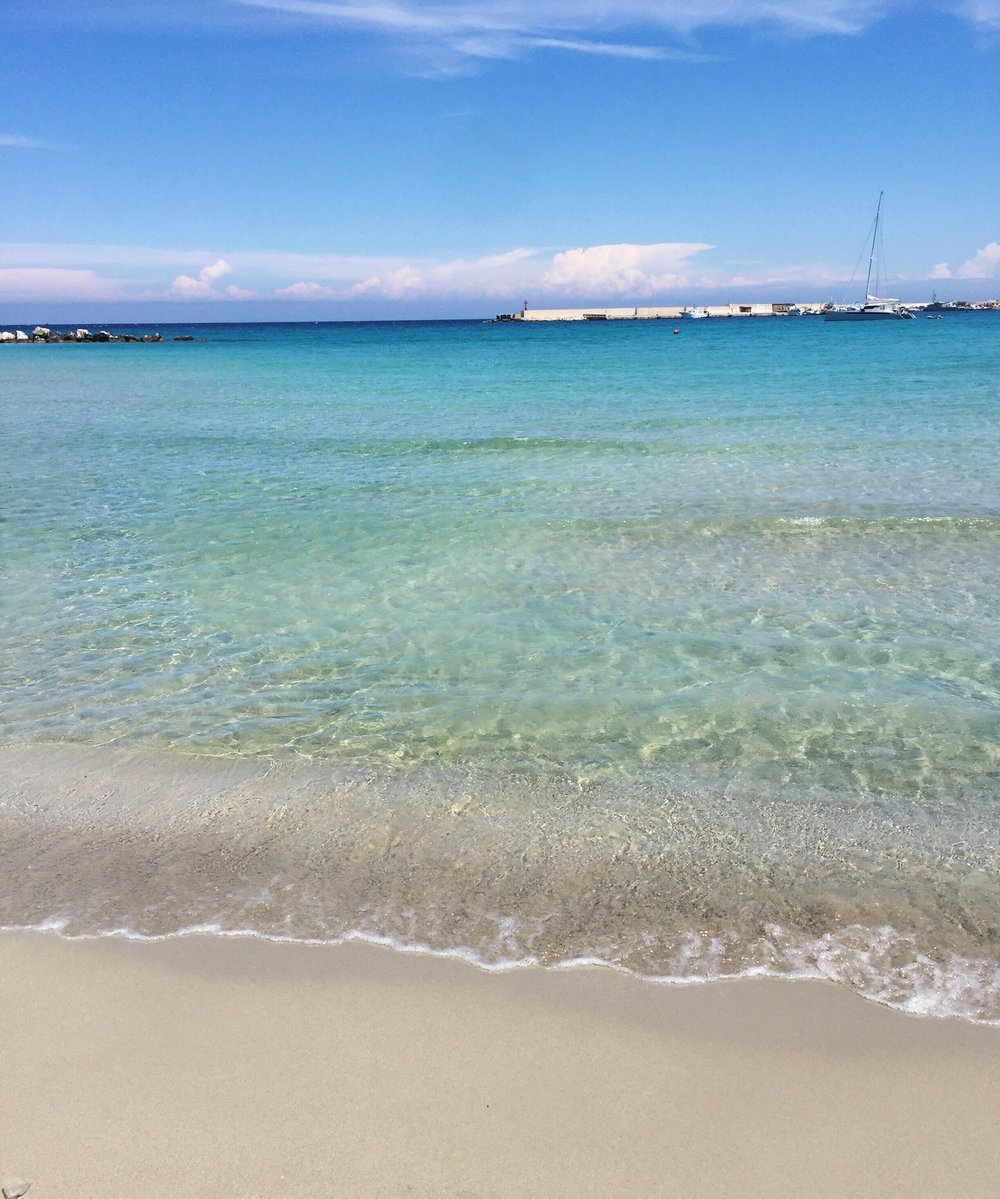100 Hours Without Food or Water: My Dry Fasting Experience
Disclosure: I ain’t a doctor. Just a human, sharing my experience. None of this is medical advice and you should always listen to your body + intuition. Not everything is right for every person, and dry fasting in particular is like the olympics of fasting. I’ve shared a lot about my previous water fasting experiences, so read up, and be smart.
I am an avid supporter of fasting. I have been playing around with intermittent fasting for years, and started incorporating longer-term water fasting in 2018. My first water fast was 7 days, and then a few months later I completed a 10 day water-only fast. Fasting has played a huge role in my life; it was actually during my first 7 day water fast that I created this entire website. My very first article was about my 7 day experience, and actually it was in sharing it that I subsequently was hired to help ghostwrite a book on fasting, and it launched my career as a freelance writer.
Dry fasting is something that has never appealed to me until now— but I felt called to try it so here I am, sharing my (just over) 4 days dry fasting experience. Before delving in to my specific experience, let’s explore dry fasting!
WHAT IS DRY FASTING?
Dry fasting is fasting without any food or water. So basically consuming nothing at all during the period of your fast. There are two types of dry fasting: hard, or soft. A hard dry fast means you’re not exposing your body to any water whatsoever (no showers, no brushing your teeth), while a soft dry fast allows for exposing your body to water, but still no drinking any. The skin absorbs what you put on it, so the more puritanical dry fast calls for no water exposure whatsoever. A soft dry fast will allow you to go for longer, but you won’t benefit as much from the intense autophagy and deuterium depletion.
NO WATER… WON’T YOU DIE?
It’s funny, I definitely used to think that. I believe it’s 3 days “they” say humans can live without water? The truth is actually far from it. When the body doesn’t consume any water, it actually begins to create endogenous water from your fat stores (like a camel does, or a hibernating bear does). Yes: you continue to pee throughout a dry fast, despite not drinking any water!
When you don’t give your body water, it starts pulling hydrogen from your fat cells in order to create water: your body creates its own molecular water. And even cooler: this water is super-charged, deuterium depleted, structured water. This is one of the reasons why dry fasting is so powerful— the added task of creating water (unlike water fasting) forces it to break down fat more quickly which not only leads to fat loss, but also really challenges the weak/ damaged cells and leads to a natural selection (survival of the fittest, cellular edition).
As the body metabolises fat: it makes water. What’s important to note here is that it takes a healthy body to properly metabolise fat (healthy enough hormones, not too much toxicity, etc). Weight-loss plateaus are deeply connected to insulin resistance, toxicity, and other hormonal imbalances— essentially if your body is in a bad place, it will not be able to burn fat nor will it be able to tap into those fat stores to generate water.
SO, IF YOU’RE NOT HEALTHY ENOUGH
OR DON’T HAVE ENOUGH BODY FAT TO BURN:
DRY FASTING CAN BE VERY DANGEROUS.
Like I said, dry fasting is like the olympics of fasting. Most people need to train to get there. Start with a proper detox, intermittent fasting, 24 hour water fasts, longer 5+ days water fast, intermittent dry fasts, etc. to make sure your body is in a good enough place to actually experience an extended dry fast. You also need some body fat to burn, in order to generate hydrogen to create water and hydrate yourself.
Sorry for the patronising video, but the information is legit.
Camels store about 80 lbs of fat in their humps, which keeps them hydrated them for 2 weeks. No, we are not camels (and in fact they have special nasal canals that helps cool their core body temp and also retain water more efficiently in the body), but the mechanism of turning fat into water is the same in humans too.
Grizzly bears can fast for up to 100 days without food and water. Although the mechanism hasn’t been deeply explored yet in humans, it’s well understood in animals.
“The sole fuel for grizzly bears in hibernation is their body fat. Through beta-oxidation they are able to yield enough energy for homeostasis, for protein synthesis, as well as for membrane transport (among other processes).
The oxidation of fat yields consistent amounts of water that keeps the animal hydrated and it makes up for the loss of water through breathing. They also use the glycerol that is released from degrading TAG (triglycerides) to convert it in glucose through the process called gluconeogenesis (synthesis of glucose).”
— LEHNINGER, IN PRINCIPLES OF BIOCHEMISTRY
Not only does your body create its own water— but this water is living water (structured water) has a profound impact on the body’s ability to truly detox. Once you start to explore water, you will quickly learn that all water is not created equal. Not only is tap water full of contaminants, but even bottled spring water is considered ‘dead’ (learn more by reading this book or watching this video)— anyways long story short: most of the water we do drink is not only dead (and possibly even dehydrating) but it also carries information and energy that isn’t serving our highest good. Humans are meant to drink directly from a pure fresh water spring, and this structured water is actually that same degree of purity as the endogenic water created from within your own body. Living water.
It is worth nothing here that yes, you will eventually dehydrate and die without water. The point is that it doesn’t happen as soon as we think, and in fact the body undergoes some pretty incredible and healing transformations along the way. There have been studies on dry fasting (healthy!) humans for 5 days (link at the bottom of this article), and there is a lot of studies on the impacts of intermittent dry fasting on the body, studied on populations during Ramadan (links also below).
NO MINERALS… WON’T YOU DIE?
Ok this part is super interesting to anyone who is into water fasting. I started connecting a few dots regarding minerals and fasting recently. People are pretty heated on the subject when it comes to water fasting: some people say it’s necessary to add minerals (especially salt), while others say to avoid it. Personally, I did use sea salt when I water fasted my previous 7, 10, and 5 day water fasts— but I noticed during my last 5 day water fast that I intuitively drank much less water, and also felt almost no need to add salt to my water.
When I watched Vegetable Police’s experience on a water fasting for 21 days, he explained how initially he was drinking a lot of water, and someone had advised him to cut back on the water and cut out the salt all together. Now I think he had issues because he was using reverse osmosis water, which is totally stripped of all minerals. But still, he felt ‘better’ when he cut back his water consumption. Like Rob Stuart explains in the video above, when you fast in the absence of minerals— you become really in touch with your body’s state, and it allows you to know exactly when to break it. To take his video one step further, I’d argue that dry fasting is the ultimate way to tune in with your body’s needs, and without any minerals (even in the form of water) you will know exactly when the right time to stop is.
Basically, the more water you’re drinking and the more physical activity (sweating) that you do— the more minerals you need. You excrete minerals when you pee and sweat, so if you’re intermittent fasting and are still very active, or if you’re resting while water fasting but drinking a lot of water, you may also need some minerals. But like Rob Stuart explains and makes most intuitive sense: while prolonged fasting, probably best to keep your water intake not too high (or none at all!), skip the minerals, and just rest.
DRY FASTING VS. WATER FASTING
Dry fasting is like water fasting, on proverbial steroids. The benefits you get from water fasting happen faster, and possibly even more deeply than you could possibly achieve than on a water fast. The statistic being thrown around out there is that dry fasting is 3x as powerful as water fasting, and the reason for this number is that levels of ketosis that are being achieved in 3 days of fasting are happening in 1 day of dry fasting. The reality is the science on fasting alone is limited, and dry fasting is even more limited. I’ve included below the information I have found, and ultimately nothing beats personal experience.
“Limited fluid intake pushes your body to burn more fat since fat can be used to produce metabolic water (water that your body makes internally). Since you won’t be hydrating your body with external liquids, metabolic water is of extreme importance and your body will strive to make it from fat at a higher rate than it would on a water fast.”
— DR. ANTHONY GUSTIN, DC, MS
In my experience and research the main differences between dry and water fasting experience wise are:
You can’t dry fast as long: needless to say, you can’t dry fast as long as water fast (many people water fast over 40 days); but one way around this is to start with a dry fast, and when your body tells you it’s time for water— you can continue on on a water fast until the body is ready again for food.
Symptoms better or worse: some people feel worse, some feel better and this has very much to do with your state of health. If you are in very poor health or don’t have much experience water fasting: stick to water fasting. Dry fasting is advanced, but once you get there and your body is in a good enough state to dry fast, you will find it much easier than water fasting.
No exercise: The reality is if you truly want to heal, you shouldn’t be exercising during any type of prolonged fasting. But when dry fasting, this is especially important because you will absolutely dehydrate yourself. The body creates enough endogenous water to keep you alive and heal, but be like a hibernating bear and rest.
BENEFITS OF DRY FASTING
Note that all these benefits are present in water fasting too (apart from endogenous water production) but they are dramatically enhanced during a dry fast.
Enhanced Autophagy (Cellular Cleaning): “Submitting the body to extreme conditions by dry fasting launches the mechanism of natural selection, an internal fight between the body’s weak and strong cells. In that competition for the scarce resources produced as a result of autolysis and synthesis of endogenic water, cells that are undamaged, strong, healthy and well-functioning win. They also pass on this strength by producing new generations of healthy cells.” Your body is able to detox on a deeper level because (aforementioned) it is tapping into your fat cells to create water. Basically, dry fasting creates a competitive environment between healthy cells, unhealthy cells, and pathogens for the scarce resource: water. And it’s no surprise that the healthy cells are best equipped to win, leaving the unhealthy cells to to be burned up through autophagy, and the pathogens die off.
Enhanced Brain Function and Protection: studies on dry fasting demonstrated an increase in the production of a protein in the brain called brain–derived neurotrophic factor (BDNF). BDNF play an important role in protecting and repairing brain cells, stimulating the growth of stem cells to produce new healthy brain cells, and improving memory and learning capacity. These factors also help prevent mental disease.
Enhanced Fat Metabolism (Fat Loss): To access the water stored in your fat cells, the body burns through fat at a much faster rate than it does while water fasting. This leads to fat loss with almost no muscle loss because the body is burning through fat to access water stores (which aren’t nearly as high in muscle tissue).
Enhanced Anti-inflammatory Activity: the studies to support this in fasting are clear, but dry fasting will reduce your inflammation markers much faster.
Deuterium Depleted Endogenous Water Production: this is the main point that cannot occur on a water fast. When you drink water, this satiates the body’s need for water, but when you dry fast the body is forced to pull hydrogen from your fat cells which when combined with the oxygen you breath: generates pure, deuterium depleted water. Unlike most waters we drink, endogenic water (created from within) is pure and structured. It hydrates your body in a way that most water cannot— to learn more, explore Gerald Pollack’s 4th Phase of Water.
Image from Siim Land (see video HERE for full explanation).
There is some, but not much science on dry fasting in English literature. There seems to be much more research happening in Russia and Japan, but my guess is that this modern obsession with water fasting will very quickly lead Western science to start investigating dry fasting as well. What information does exist (as well as my own experience) suggests that the benefits are coming in much faster with a dry fast, but oddly enough I found dry fasting much easier than water fasting!
DRY FASTING AND THE BREATHARIAN “MOVEMENT”
Oh, one last note on the online information on dry fasting— a chunk of it is coming from the breatharian community (people who think you can live only on air). I’ll say this only once: breatharianism is totally whack, you cannot live on only air. This dry fasting technique is not a goal long term, in fact when you fast too often you can harm your body. You don’t want to be in autophagy all the time! The bulk of the benefits of fasting come when you re-feed, and so any weird (lying) cult that tells you fasting 24/7 365 is the goal is just loco. But don’t throw the baby out with the bath water— this style of advanced fasting definitely attracts some lunatics, but is also grounded in ancestral practices and is promoted by sane people as well.
IS FASTING FOR EVERYONE?
Hells no. Although I think everyone can surely benefit from a fast, I don’t think that everyone is prepared for one. The ultimate way of knowing is by checking in with your intention. I don’t think, personally, that fasting should be pursued simply as a means to lose weight. I know many people do, but I think that embarking on this intense physical and mental journey with the only intention of losing weight can be detrimental (see the next paragraph). Prolonged fasting also puts a lot of stress on the body (dry fasting even more so), so if you don’t have time to rest— I suggest sticking to intermittent fasting (12-16 hours per day) is a much more sustainable and healthy alternative to multi-day fasting.
IS FASTING AN EATING DISORDER?
It definitely can be, for some. This is one of the reasons I think fasting primarily for weight loss can be dangerous. The thing itself is never ‘unhealthy’ in moderation— be it food, fasting, alcohol, drugs, sex, shopping, or gambling. The addiction (and problems) arise depending on the INTENTION one has with the substance or activity. Many people freak out saying all fasting is disordered eating and to that, I see people projecting their own problems onto something that isn’t in of itself problematic. Some people are alcoholics, some people can enjoy alcohol responsibly— simply because someone is an alcoholic doesn’t mean everyone is. Simply because some people starve themselves from a place of self-hate (anorexia) doesn’t mean fasting can’t be done responsibly and from a place of self-love by others.
The reason I think fasting shouldn’t be a means to a weight loss goal is that it can very quickly turn into an eating disorder. You need to look out for yourself, and know that mental health and stability is something that is valuable beyond measure. To fast from a place of self-hate will do nothing but generate more self-hate (where attention goes, energy flows). Addressing your self worth and weight as it relates to your mental health is paramount before thinking that a fast will ‘fix’ all your problems.
So is fasting an eating disorder? Depends on the WHY not the what. Why people do what they do, the intention, dictates if the behaviour is healthy or not. Only you can be honest with yourself about the why, and I urge you to do that before embarking on any sort of fast.
HOW I “PREPARED” FOR MY DRY FAST
I don’t think I could have prepared worse, if I tried. I’m staying at an Airbnb in Otranto, in the South of Italy…. and during the past week, Myriam (my wonderful host) and her family have been feeding me more bread and pasta than no joke I’ve probably consumed in the past 5 years. I normally avoid wheat (hell no GMO), but they grow their own heirloom wheat, hand milled, and make bread and pasta by hand. I’m in Italy! Myriam showed me how she handmakes orecchiette pasta, and cooked me a huge plate (it was so good). The day prior to starting my fast, the grandparents here on the farm brought me freshly baked bread and this focaccia pie stuffed with wild greens and olives, and I literally ate bread for breakfast, lunch, and dinner (I don’t normally eat bread, ever). So needless to say, I don’t recommend this! Changing your diet like that the day before a fast is absurd, but I actually didn’t plan on starting to fast the following day (spur of the moment). Semi-surprisingly, I didn’t feel sick or bad at all from all that bread, because (I believe) it was real food, made with so much love. Alchemy is the most powerful tool when it comes to food.
Had I not gone wheat-crazy in the week prior to my dry fast, I wholeheartedly believe I would have been able to dry fast much longer. There’s no doubt that I went into this slightly dehydrated.
Also, a hard dry fast calls for abstinence from water all together— meaning you should definitely take advantage and shower right before starting your hard dry fast. Being the hippy that I am, I have actually only ‘showered’ (aka swam) in the sea for the past like, 5 days. Had I realised I would be dry fasting, I would have definitely showered and washed my hair the day prior. Like I said, this was an impromptu fast. So, I braced myself for dreadlocks by the end.
HOW TO PROPERLY PREPARE FOR A DRY FAST
How you should prepare, is definitely not with a carb-party (although, I felt great for 100 hours so… maybe bread is a secret weapon). No but seriously, fasting is basically a report card for your overall health. My normal diet is full of organic vegetables and fruits, pasture-raised meats, lots of spring water, and daily intermittent fasting. Almost nothing processed, and definitely no junk food. And no tap water in like 5 years (it’s highly dehydrating and super toxic). So although I went on a bread-bonanza the day(s) prior, I think the ease in which I navigated this dry fast is due to my overall status of good health.
A more sensible approach to preparing for a dry fast would include a keto-friendly diet for 1 week prior, to prepare your body for glycogen depletion during a fast. Make sure to stay well hydrated the week prior, and avoid any processed foods or caffeine.
Before ever considering embarking on a dry fast I also invite you to:
A) Incorporate intermittent fasting into your everyday lifestyle (at least 12 hours of fasting, daily);
B) Do regular 24 hour fasts (first water fasts, and then dry fasts);
C) Complete a few extended water fasts (5+ days);
D) Have done a few detoxes (including regular sauna use and parasite cleanses).
Basically: if you’ve never done any sort of cleanse, detox, or fast: don’t start with an extended dry fast!
By the time you feel called to dry fast, you should be in tune with your body enough to know when it feels right to start and when your body has had enough (when to stop fasting). Fasting is incredibly intuitive, and while some people can dry fast for 4, 10, 15 days— this is not the case for everyone. Listen to your body! If you are very sick, guidance from a medical professional is a good idea.
And lastly: you need to have enough body fat if you want to dry fast for multiple days. I don’t doubt that anyone could dry fast for one day, maybe two. But if you’re very lean— stick to water fasting, or intermittent dry fasting (16/8).
SLEEP AND FASTING
Sleep can be all over the place while you fast, and it’s actually important to listen to the body all day and night— to know when you should safely break your fast. One of the great things about dry fasting is that you’re not giving your body any minerals, so how you feel is a very honest depiction of how your body is doing. In a water fast, it is often advised to take minerals but they can also act like an artificial bolster, and could arguably push you to fast longer than you should. When your cortisol and heart rate keep you up significantly at night, this would be a sign that you have more healing to do before attempting a prolonged dry fast.
Although I have taken off my Oura ring, I decided to put it back on during this fast to examine my sleep data. To learn more about Oura, you can click the button below (I also explain why I stopped wearing it). I have included my sleep data in the daily journal of my fasting experience.
DRY FASTING: MY EXPERIENCE
DAY 1
I actually didn’t plan on doing a long term fast until I woke up this morning and felt the time was right. My intention was to go camping next week and aim for a 7 day water fast, but I saw rain forecasted and so I checked in with my airbnb host to see if I could extend my stay here on the farm, and she told me that two guests randomly cancelled and so there was 5 days open after my stay (…I’m pretty sure I manifested that). So I decided to start today. I actually haven’t done any research into dry fasting prior to today, but I spent most of my day watching youtube videos and reading up on it. Turns out it’s way more interesting than I realised.
Today overall was easy. No hunger, which is a little surprising considering yesterday’s carb-fest. I would have thought that my rollercoaster blood sugar from all that dough would have left me feeling ravenous today but I felt pretty great all day. Also considering how much water I normally drink, I weirdly haven’t been thirsty once either. The body is pretty incredible.
DAY 2
Day 2 was surprisingly ok. To be honest, I kept expecting a hardship to come considering my carb-prep, but nope. The time did go by really slowly. That is personally the most challenging thing for me whilst fasting, is passing the time. So far I have decided to stay in (apart from a literally 3 minute walk outside to get my feet in the earth), just to conserve energy and rest. The concept of dry fasting in nature generally happens when animals are in complete hibernation. So Basically lazing around all day without having to cook…. well, time goes by hell-a slowly.
No hunger, no thirst. But I skyped my parents in the late afternoon and just interacting like that made me yawn about 10 times during the conversation.
DAY 3
Last night I slept fine as well. It took me a little longer than normal to fall asleep (usually I hit the pillow and am asleep within 60 seconds), but all in all I still felt like I got decent sleep and woke up feeling rested.
Day 3 was possibly more energized than yesterday. Again, I rested almost all day (doing some writing work from bed). I sat outside in the sun/ grass for about an hour. Am still peeing today (I knew this would happen throughout, which is one of the most amazing things! The body generates endogenous water pulling hydrogen from the cells. So cool).
My mouth was a little bit drier today. Still have saliva, but I can tell the back of my throat is a little bit drier.
DAY 4
Last nights sleep wasn’t the best. I woke up around 3 or 4 am to a slightly elevated heart rate. I had a hard time falling asleep again, but eventually did. By now it’s no surprise my cortisol is much higher and so it’s hard to sleep when you’ve got cortisol pumping through your veins. However it wasn’t brutal and I still woke up feeling good.
Day 4 was great, I went to the markets in the morning (drove) and picked up a bunch of fruits to break my fast with . Spent about an hour in the sun at solar noon and got a fair amount of work done. Feeling very clear headed, no headaches or any pain. Mouth and skin in general is a little bit more dry but my mouth still full of saliva and I’m still peeing a few times per day.
DAY 5
I went to bed last night around 9:30 pm and woke up to an elevated heart rate around 11:30 pm. I checked my clock last night when my heart rate woke me up (it was about 3 or 4 am), and after taking a few calm breaths I could feel my heart calming down. Although it took me a little bit of time to fall asleep, no part of my intuition was telling me to break it (the night of day 4); however— last night when I woke up at 11:30 pm, I had a different sensation. Still no sense of conventional ‘thirst’ but I knew it was what my body needed. It took me only a few minutes to decide that yes I would be breaking my dry fast now. I drank a cup or two of spring water and fell straight back to sleep and slept through the night until 6 am, and after waking up and listening to a podcast I snoozed again until almost 9 am. I clocked 4 hours and 22 minutes of deep sleep that night (!!!!), which is a record for my Oura ring data. Pretty clear my body indeed needed water!
Realise that although I planned on dry fasting up to the end of day 5 (the evening), I cannot emphasize enough how important it is to listen to your body. I have no doubt that had I not been carb-loading on all these Italian goods, that I would have been able to go much more than 100 hours dry. But, considering ‘science’ tells us humans die after 3 days without water, safe to say I’m pretty content with this first experience.
After waking up and having a little more water, I took a short bicycle ride to the beach and got some naked sun time, and a swim. I felt like I was a dry sponge just absorbing all the minerals from those magical waters. After re-hydrating my body in the sea and with slow consumption of plain spring water, I feel so alive it’s almost unbelievable. I spent all afternoon in the sun, and my energy is electric! My mind is so clear and I’ve been getting lots of writing work done. I will continue to fast on water for the rest of today, and proceed to break my fast as detailed below.
These are the stats from the Oura ring for the 4 nights of my dry fast. [click on image for full size]
HOW TO BREAK A DRY FAST
Breaking a dry fast is of course different than breaking a water fast (click here to read my guide to breaking water fast). This time around, I had to factor in the reality that my body has not been exposed to any minerals (especially salt!) in a long time. The longer time you spend away from sodium, the more sensitive you become to it. Your kidneys, insulin, and sodium functions all work together— So to avoid ballooning/ bloating/ shocking my system— I followed (the very rational) idea of easing my way back to water before even fathoming reintroducing solids.
How you break your dry fast (or any fast) it also depends how long you fasted for. Consider doubling your recovery time back into solid foods twice or even three times as long as I suggest if you fasted for a longer period.
1 day post dry-fast: water only, and not too much of it! Don’t gulp. Stick to 1 cup every 1-2 hours, max. But I suggest just listening to your body (unless it’s telling you to gulp). I’ll estimate that the 24 hours after breaking the dry fast I probably had 4 or 5 cups of water the whole day. The best thing you can do on day 1 is to get into a natural body of water, especially if it’s the sea. Your body is a sponge! I swam in the sea and could feel those minerals soaking into my body, it was absolutely magical. I highly suggest investing in a shower filter if you’re going to break your dry fast with a shower, because you’ll be absorbing all those nasties.
2 days post dry-fast: slowly introduce a little sea salt, lemon, and grapefruit juice, coconut water, and bone broth. Today we’re super charging our bodies with minerals, and keeping it mostly liquid. If you feel called to it, go for some of the fresh coconut meat, whole grapefruit, and watermelon.
3 days post dry-fast: ketogenic, soft, bland foods, and small portions. Today, listen to your body. Personally, I opted for a some avocado, some slow cooked rabbit, some very soft cauliflower, and olive oil. I also had some grapefruit and a little water melon in the morning. I cooked rabbit broth for day 2, and so had the rabbit meat for day 3. I cooked the cauliflower in the broth. This is a good day to reintroduce fermented foods (like yogurt and sauerkraut), and you may want to keep today off meat (definitely don’t introduce any met cooked on a grill or pan. Slow cooked meat was no problem for me).
4 days post dry-fast: today you should be able to go back to a ‘regular’ diet, if your diet is overall a healthy one. Take this opportunity to break free from addictions (like caffeine or sugar).
Mineral rich foods (especially high in potassium!) and low glycemic, perfect for remineralising my body in the days post dry fast.
DIVE DEEPER
ARTICLES
Dry Fasting: The Truth About This New Health Industry Trend by Perfect Keto
10 Day Water Fast: My Experience + Q&A by Becoming Fully Human
7 Day Water Fast: My Experience by Becoming Fully Human
Water Fasting Tips by Becoming Fully Human
The Ultimate Guide To Breaking A Water Fast by Becoming Fully Human
Guide to Dry Fasting by Kiss my Keto
Guide to Dry Fasting by Mark’s Daily Apple
The Incredible Benefits of Dry Fasting: The Fastest Way to Better Health by Islamic Renaissance
Dry Medical Fasting – Myths and Reality by Sergei Ivanovich Filonov (this is an English translation of a book, and the translation is very poor, but still offers some insights into how dry fasting is being used in the east).
Does Dry Fasting Increase Autophagy? – Dry Fasting VS Water Fasting by Siim Land
Optimal Health Blueprint: Dry Fasting by Inspired by Hilde
“SCIENCE”
Study on 5 days of dry fasting in healthy adults by Mascioli et al
Anthropometric, hemodynamic, metabolic, and renal responses during 5 days of food and water deprivation by Papagiannopoulos et al
Study that explore how cell dehydration inhibits mTOR Signalling by Schliess et al
Effect of Ramadan (Dry) Fasting on Weight and Body Composition in Healthy Non-Athlete Adults: A Systematic Review and Meta-Analysis by Fernando et al
Ramadan Fasting Decreases Body Fat but Not Protein Mass by Syam et al
Effects on health of fluid restriction during fasting in Ramadan by Leiper et al
Ramadan and sport: minimizing effects upon the observant athlete by Shephard
Effects of endurance exercise on metabolic water production and plasma volume by Pivarnik et al
How much water is actually produced by a human on an average day of metabolism? by The Naked Scientists
PODCASTS
THE COMPLETE GUIDE TO DRY FASTING BY THE UGLY TRUTH PODCAST


